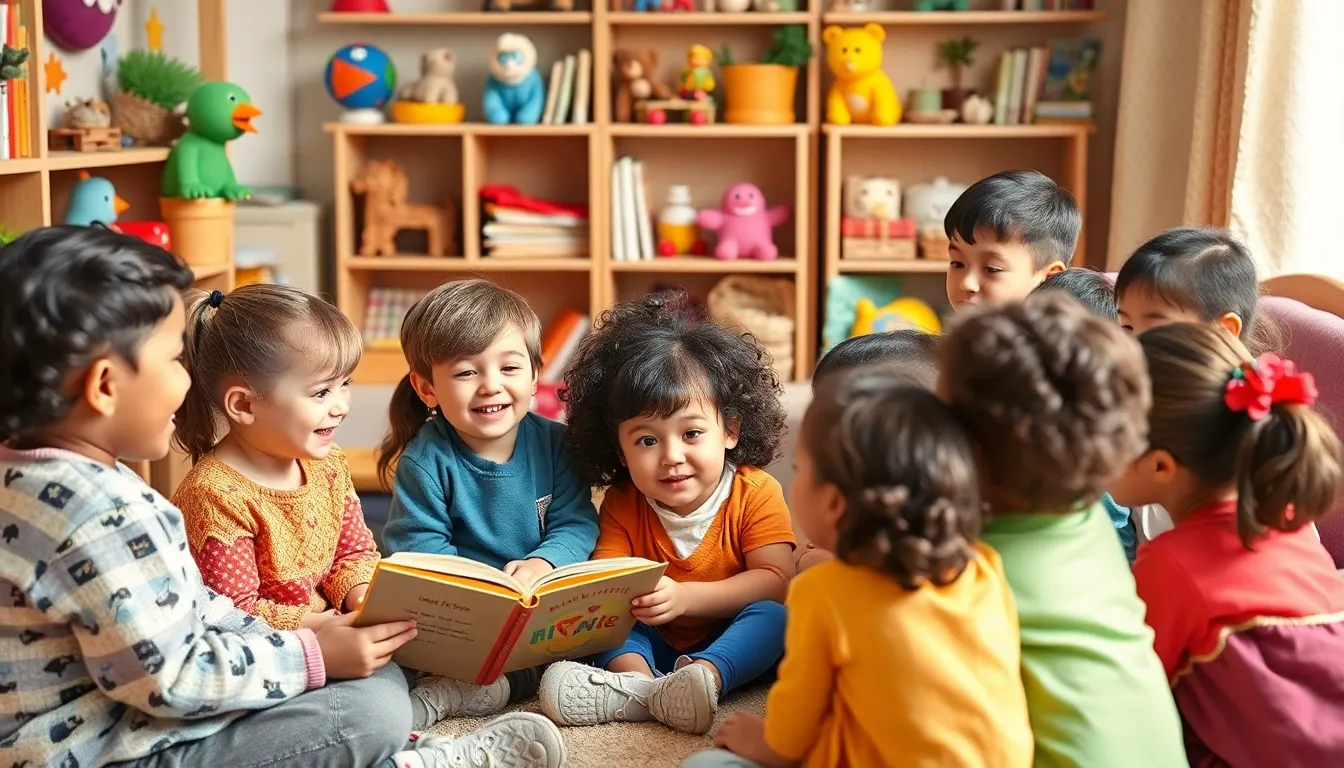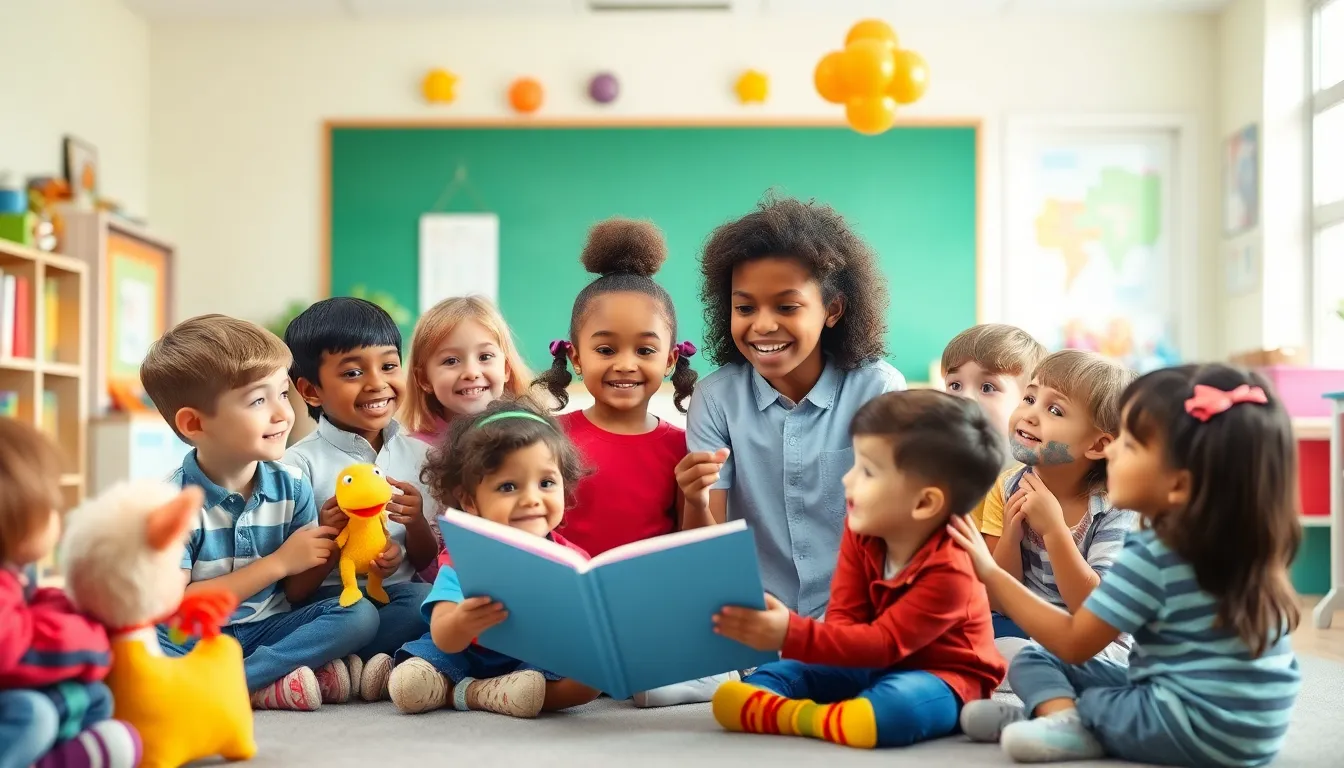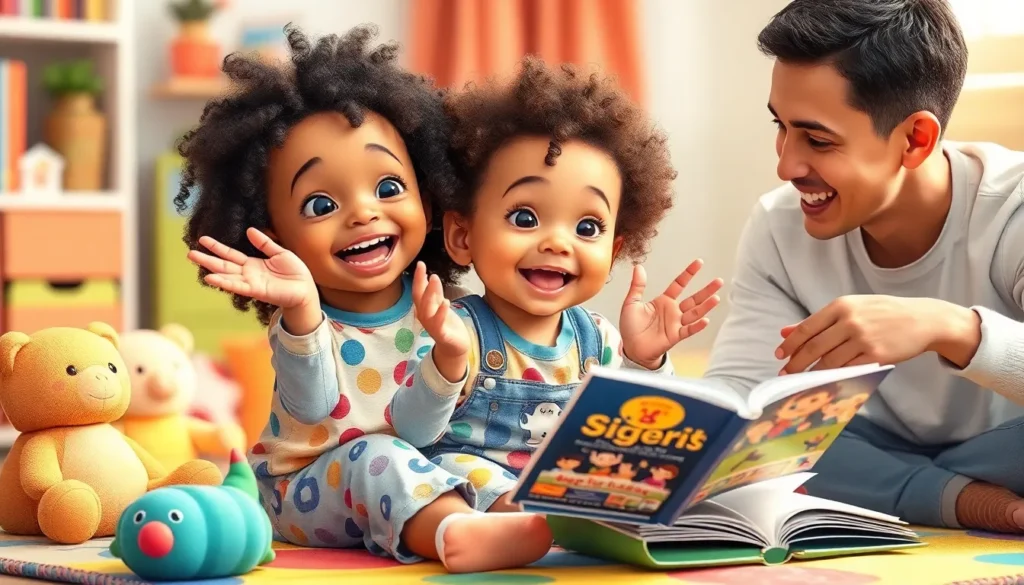Table of Contents
ToggleImagine a world where giggles and words collide, creating a symphony of childhood joy. Language isn’t just a tool for communication; it’s a magical playground where kids can unleash their creativity. From silly rhymes to playful puns, the journey of language development is packed with laughter and learning.
In this vibrant adventure, children discover the power of words while having a blast. They explore sounds, experiment with silly phrases, and dive into the delightful chaos of storytelling. Engaging in language fun not only boosts their vocabulary but also nurtures their imagination. So why not turn everyday moments into opportunities for linguistic exploration? After all, who wouldn’t want their little ones to master the art of conversation while cracking up along the way? Let’s dive into the world of childhood language fun and discover how to make learning an unforgettable experience.
Understanding Childhood Language Development
Childhood language development plays a crucial role in shaping communication abilities. Understanding this process helps parents and caregivers foster a supportive environment for linguistic growth.
Importance of Early Language Skills
Early language skills significantly impact a child’s ability to express thoughts and emotions. They lay the foundation for social interactions, academic success, and cognitive development. Effective communication promotes confidence, enabling children to engage with peers and adults. Research shows that vocabulary acquired by age three directly correlates with later literacy rates. Engaging in conversations, reading books, and singing songs enriches a child’s language experience. Parents who incorporate diverse language activities cultivate a love for learning in their children.
Milestones in Language Acquisition
Milestones in language acquisition guide the expectations for children’s language development. By age one, most children can say their first words. Between ages two and three, vocabulary typically expands to about 200-1,000 words. Two-year-olds often start combining words into simple sentences. By age four, they can form more complex sentences and understand basic grammar rules. Children may engage in imaginative play that reflects their language skills. Monitoring these milestones helps parents identify any concerns early, ensuring timely intervention and support. Understanding these stages creates better opportunities for language exposure and enrichment.
Engaging Activities for Language Learning


Engaging activities play a vital role in enhancing childhood language development. They make learning enjoyable, allowing children to express themselves creatively while mastering new vocabulary.
Interactive Storytelling Techniques
Interactive storytelling captivates children’s attention and encourages participation. Parents can invite kids to contribute characters, plot twists, or endings, fostering creativity. Using props or puppets adds a tactile element that further engages young minds. Stories from diverse cultures introduce new words and concepts simultaneously. Involving questions during the narrative helps children practice comprehension, enhancing their listening skills. These storytelling sessions develop vocabulary while nurturing a love for literature. It’s essential to create a warm and encouraging environment that inspires children to share their thoughts freely.
Rhymes and Songs for Vocabulary Building
Rhymes and songs serve as powerful tools for vocabulary building. Familiar melodies stick in children’s minds, making it easier to remember new words. Parents can incorporate classic nursery rhymes or create original songs aligned with daily activities. Repeating phrases and rhymes offers a fun way for kids to practice pronunciation. Singing along also improves rhythm and intonation, essential aspects of language. Utilizing hand motions or actions while singing reinforces meanings and enhances memory retention. This playful approach turns language learning into an enjoyable experience, engaging children in their linguistic journey.
The Role of Play in Language Development
Play serves as a fundamental aspect of childhood language development. Through engaging in different types of play, children acquire and refine their language skills naturally.
Types of Play that Enhance Language Skills
Dramatic play encourages children to engage in role-playing scenarios, fostering creativity and vocabulary expansion. Children often act out stories, utilizing new words while collaborating with peers. Physical play, like games that involve movement, allows children to interact and communicate, reinforcing language use in a fun environment. Educational games designed for language learning can also effectively include puzzles and word games. Such activities not only improve vocabulary but also enhance comprehension.
Benefits of Cooperative Play
Cooperative play significantly promotes language development through shared experiences. Children learn to negotiate roles during group play, which strengthens their verbal skills. This interaction helps them practice conversational skills and understand social cues. They’ll develop listening skills while showing respect for others’ ideas, boosting empathy. Such shared activities create a supportive environment where children feel comfortable experimenting with language, leading to increased confidence in their communication abilities. Engaging in cooperative play sets a solid foundation for effective social interactions as they grow.
Technology and Language Learning Tools
Technology provides valuable resources for enhancing childhood language development. Tools such as educational apps and engaging games significantly contribute to this process.
Educational Apps and Games
Educational apps and games offer interactive experiences that promote vocabulary expansion and language skills. Many apps focus on phonics and rhyme, reinforcing important concepts through entertaining challenges. Kids enjoy colorful visuals and engaging sounds that sustain their interest. Some apps adapt to a child’s learning pace, presenting personalized tasks that boost confidence and comprehension. Apps like Endless Alphabet and Starfall enhance language learning through fun activities that motivate children to explore new words and phrases.
Balancing Screen Time with Real-Life Interaction
Balancing screen time with real-life interaction is crucial for effective language development. While technology provides valuable support, it cannot replace face-to-face interactions. Engaging in conversations and storytelling with caregivers creates meaningful connections that enrich language acquisition. Parents can set limits on screen time, ensuring children receive ample opportunities for verbal communication. Activities like reading together or playing word games help solidify the skills learned through apps. Encouraging conversations during everyday tasks reinforces language use in natural contexts, promoting a healthy blend of technology and real-life experiences.





